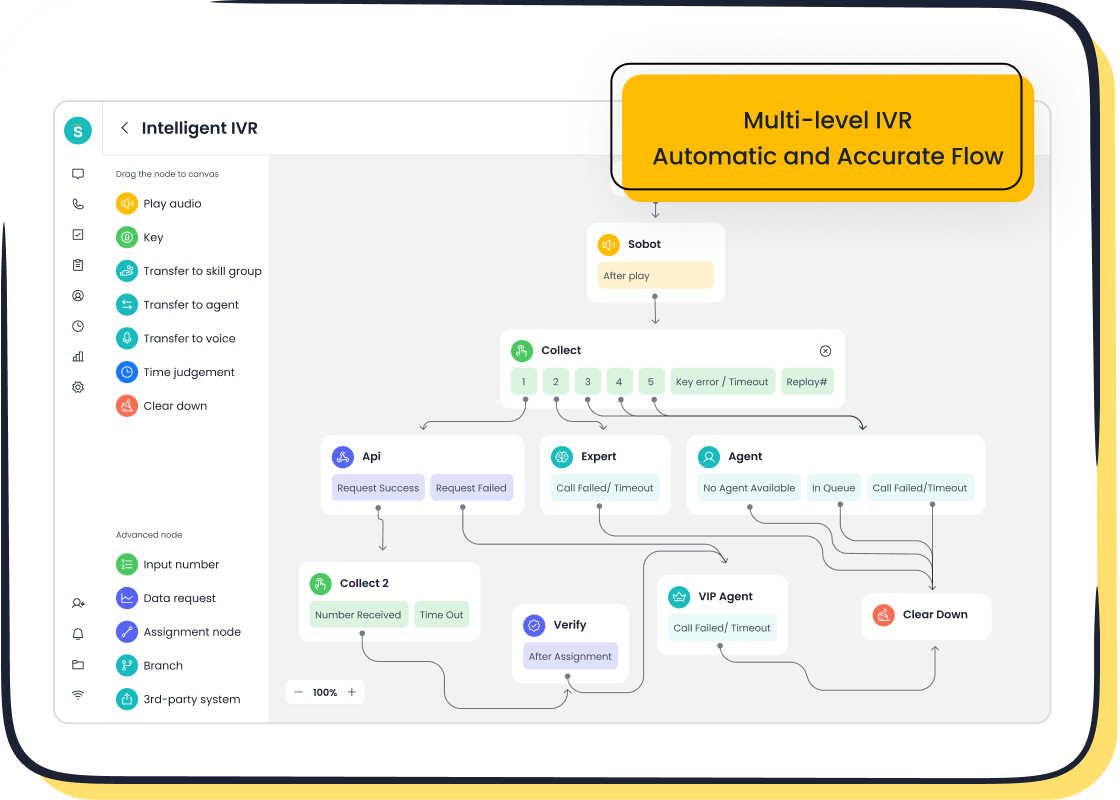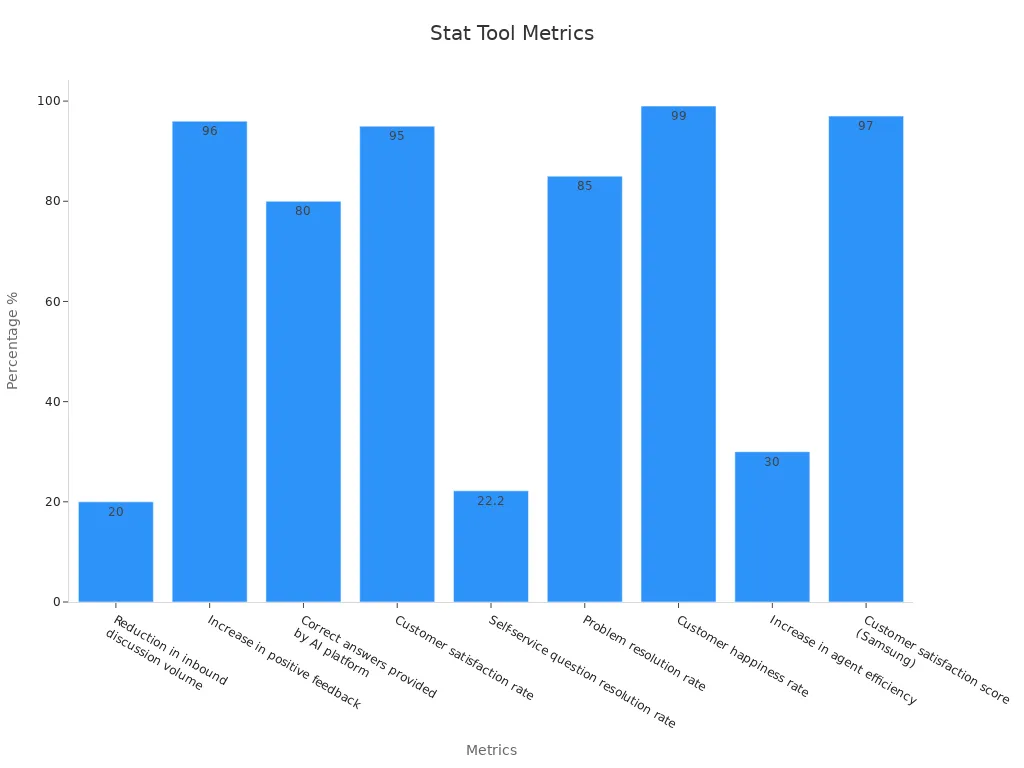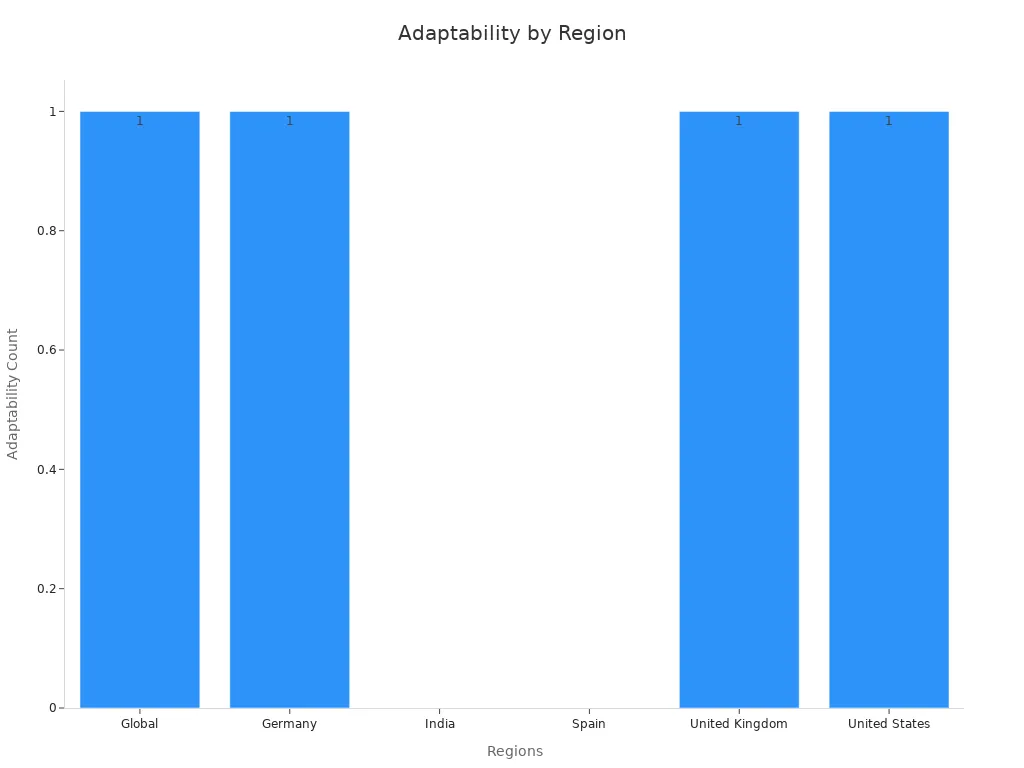How to Improve Customer Service Skills in 2025

Customer service skills are more important than ever for career growth in 2025. As industries evolve, so do customer expectations. You need to adapt quickly to meet these demands. Companies using data-driven strategies can boost efficiency by 20%, and tools like Sobot's Voice/Call Center make this possible. With features like AI-powered voicebots and global call tracking, Sobot helps you deliver exceptional service. If you're wondering what are good skills for customer service, consider the ability to leverage technology and data effectively. Did you know nearly 50% of professionals plan to adopt AI for tasks? This shift shows how critical it is to stay ahead in this dynamic field.
What Are Good Skills for Customer Service in 2025?
Defining essential customer service skills
In 2025, customer service is all about meeting expectations with precision and care. So, what are good skills for customer service? Four key traits stand out: personalization, convenience, competency, and proactiveness. Personalization means tailoring interactions to each customer’s unique needs. Convenience ensures customers can reach you through their preferred channels, whether it’s a call, chat, or email. Competency reflects your ability to resolve issues quickly and accurately. Proactiveness involves anticipating problems before they arise and offering solutions upfront. These skills aren’t just buzzwords—they’re the foundation of exceptional service.
Why these skills are critical for career growth

Mastering these customer service skills can set you apart in a competitive job market. Companies value employees who can build trust and loyalty with customers. For instance, being proactive can help you identify opportunities to upsell or cross-sell, boosting revenue. Competency ensures you handle complex queries efficiently, which can lead to promotions. Tools like Sobot’s Voice/Call Center make it easier to develop these skills. Features like AI-powered voicebots and smart call routing help you deliver personalized and convenient service, enhancing your career prospects.
Examples of successful customer service professionals
Take Michael Kors, for example. Their team used Sobot’s solutions to unify customer interactions across channels. This approach reduced response times by 83% and increased customer satisfaction to 95%. By focusing on personalization and convenience, they turned challenges into opportunities. You can achieve similar success by honing your skills and leveraging the right tools.
Mastering Empathy to Build Strong Customer Relationships

What is empathy in customer service?
Empathy in customer service means understanding and sharing your customer’s feelings. It’s about seeing the situation from their perspective and responding with care. Why does this matter? Empathy builds trust, strengthens relationships, and creates memorable experiences. Research shows that empathetic service can:
- Improve customer satisfaction by exceeding expectations.
- Enhance trust and rapport, making customers feel valued.
- Resolve conflicts effectively by addressing emotions and offering personalized solutions.

When you connect with customers on an emotional level, they’re more likely to stay loyal to your brand. Tools like Sobot’s Voice/Call Center can help you track customer interactions and identify moments where empathy can make a difference.
Steps to develop empathy in professional interactions
Developing empathy takes practice, but it’s worth the effort. Here are some steps to help you:
- Active listening: Pay close attention to what customers say and ask thoughtful follow-up questions.
- Positive language: Use words that exude positivity and show you care.
- Put yourself in their shoes: Imagine how they feel and acknowledge their emotions.
- Take responsibility: If something goes wrong, own up to it and offer solutions.
- Follow up: Check in after resolving an issue to ensure satisfaction.
- Practice patience: Stay calm and composed, even in challenging situations.
You can also sit in on customer service calls or observe customers using your product to better understand their needs. Sobot’s analytics tools make it easier to dive into customer behavior and identify trends that can guide empathetic interactions.
Real-world examples of empathetic customer service
Michael Kors provides a great example of empathy in action. By using Sobot’s unified platform, their team reduced response times by 83% and achieved a 95% customer satisfaction rate. They personalized interactions and addressed customer concerns with care, turning challenges into opportunities. Imagine the impact you could make by combining empathy with the right tools. Whether it’s resolving a complaint or simply listening, small acts of empathy can leave a lasting impression.
Listen Attentively to Understand Customer Needs
The importance of active listening in customer service
Active listening is more than just hearing words; it’s about truly understanding what your customers are saying. When you listen attentively, you show customers that their concerns matter. This builds trust and loyalty, which are essential for long-term relationships. Studies reveal that active listening leads to personalized responses and thoughtful solutions, which can boost customer satisfaction by up to 20%. Imagine a retail chain that trained its staff in active listening and saw a 15% increase in sales within six months. That’s the power of listening! By focusing on what customers say, you can uncover their real needs and resolve issues more effectively.
Techniques to improve attentive listening
Improving your listening skills doesn’t have to be complicated. Start by eliminating distractions—put away your phone and focus entirely on the conversation. Practice active listening techniques like nodding, maintaining eye contact, and asking clarifying questions. The HEARD method is a great framework: Hear, Empathize, Apologize, Resolve, and Diagnose. For example, empathizing with a frustrated customer can ease tensions, while apologizing shows you take their concerns seriously. Training sessions and constructive feedback can also help you refine your skills. Tools like Sobot’s Voice/Call Center make it easier to track conversations and identify areas for improvement, ensuring you’re always growing as a listener.
Scenarios where listening attentively resolves issues
Let’s look at real-world scenarios. A customer calls to report a billing error. By listening attentively, you catch the details they share and quickly identify the mistake. This not only resolves the issue but also leaves the customer feeling valued. Another example: a customer complains about a delayed order. Instead of interrupting, you let them explain fully, empathize with their frustration, and offer a solution. These moments show how listening can turn negative experiences into positive ones. With tools like Sobot’s AI-powered voicebots, you can even analyze call data to spot patterns and improve future interactions.
Enhancing Communication Skills for Better Customer Interactions

The role of clear communication in customer service
Clear communication is the backbone of excellent customer service. It ensures that customers feel heard, understood, and valued. When you communicate effectively, you can manage expectations, resolve issues faster, and build trust. For example:
- Regular updates help customers see the value of your service.
- Transparent timelines and pricing improve satisfaction.
- Consistent communication fosters loyalty and long-term relationships.
| Evidence Type | Description |
|---|---|
| Managing Expectations | Clear communication helps set realistic timelines and transparent pricing. |
| Trust Building | Consistent communication builds trust and loyalty. |
| Issue Resolution | Effective communication resolves problems quickly and improves experiences. |
When you focus on clear communication skills, you create a positive experience that keeps customers coming back.
Tips to improve verbal and written communication
Improving your communication doesn’t have to be complicated. Start by practicing these tips:
- Be concise: Avoid jargon and get straight to the point.
- Use positivity: Choose words that uplift and reassure customers.
- Listen actively: Pay attention to what’s being said before responding.
- Proofread written messages: Double-check for clarity and tone.
- Adapt your style: Match your tone to the customer’s preferences.
For instance, if a customer seems frustrated, a calm and empathetic tone can help diffuse the situation. On the other hand, a cheerful tone works well for casual inquiries. Tools like Sobot’s Voice/Call Center can assist by providing AI-powered insights into customer interactions, helping you refine your approach.
How Sobot's Voice/Call Center supports effective communication

Sobot’s Voice/Call Center is a game-changer for improving communication. It offers features like smart call routing, AI-powered voicebots, and real-time analytics. These tools help you deliver clear and consistent messages across every interaction. For example, Sobot’s platform has reduced inbound discussion volume by 20% and increased customer satisfaction to 95%.

With Sobot, you can track conversations, analyze customer feedback, and ensure your team communicates effectively. Whether it’s resolving issues or building trust, Sobot’s tools make it easier to connect with customers and leave a lasting impression.
Cultivating Adaptability in a Dynamic Customer Service Environment
Why adaptability is essential in 2025
Adaptability is no longer optional in customer service—it’s a must-have skill. As industries evolve, so do customer expectations. You’ll need to adjust quickly to new tools, technologies, and customer behaviors to stay ahead. A global study highlights adaptability as one of the top skills for 2025 across regions like the United States, Germany, and the United Kingdom.
| Region | Top Skills in 2025 |
|---|---|
| Global | Customer service management, Adaptability |
| Germany | Client management, AI literacy, Adaptability |
| India | Innovative thinking, Problem-solving |
| Spain | Communication, Customer service |
| United Kingdom | Relationship building, Adaptability |
| United States | AI literacy, Adaptability |

This data shows how critical adaptability is for thriving in a dynamic environment. Whether it’s learning AI tools like Sobot’s Voice/Call Center or responding to customer feedback, being flexible will set you apart.
Strategies to become more adaptable in your role
Becoming adaptable doesn’t happen overnight, but small steps can make a big difference. Start by creating a culture of learning and reflection. Bite-sized training sessions can help you practice new skills without feeling overwhelmed. Joining learning communities or seeking out role models can also inspire you to grow.
Here are some actionable tips:
- Be responsive to new information and ask questions.
- Commit to personal development through training.
- Volunteer for new projects to gain diverse experiences.
- Suggest process improvements to show initiative.
Resilience and adaptability can be learned. According to the Center for Workplace Mental Health, "in a dynamic work environment, resiliency training elevates job performance and work engagement."

Using tools like Sobot’s unified workspace can also help you adapt by streamlining workflows and making it easier to manage customer interactions.
Examples of adapting to customer needs and feedback
Adaptability shines when you respond to customer needs in real-time. For example, Michael Kors used Sobot’s solutions to unify customer channels and integrate systems. This approach reduced response times by 83% and boosted customer satisfaction to 95%. They adapted to customer feedback by personalizing interactions and improving efficiency.
Imagine a scenario where a customer requests support through a new channel like WhatsApp. By leveraging Sobot’s omnichannel solution, you can seamlessly integrate this channel into your workflow. This not only meets customer expectations but also demonstrates your ability to adapt. Small changes like these can leave a lasting impression and build trust.
When you embrace adaptability with positivity, you’ll find it easier to navigate challenges and create meaningful customer experiences.
Strengthening Problem-Solving Abilities for Career Growth
The importance of problem-solving in customer service
Problem-solving is at the heart of excellent customer service. When you solve issues effectively, you not only satisfy customers but also build trust and loyalty. Employers value this skill because it shows you can take ownership of challenges and turn them into opportunities. In fact, job descriptions for customer service roles often highlight problem-solving as a key qualification. Whether you're resolving billing errors or addressing product concerns, your ability to think critically and act decisively makes a lasting impact.
Customer service representatives are expected to represent their brand with professionalism and empathy. This means staying calm under pressure and delivering solutions that align with the company’s values. Quality assurance managers also rely on problem-solving to evaluate agent performance and coach teams effectively. By mastering this skill, you position yourself as a valuable asset in any organization.
Steps to improve critical thinking and decision-making
Improving your problem-solving skills starts with sharpening your critical thinking. Here’s a step-by-step guide to help you:
| Step | Description |
|---|---|
| 1 | Use statistical analysis to gather insights. |
| 2 | Visualize data to identify trends and patterns. |
| 3 | Apply advanced analytics like machine learning. |
| 4 | Interpret findings to make informed decisions. |
| 5 | Monitor outcomes and adjust strategies. |

You can also try mind mapping to organize information or consider alternative perspectives to avoid bias. Reflecting on past decisions helps you learn and grow. Tools like Sobot’s Voice/Call Center simplify this process by offering real-time analytics and insights, enabling you to make data-driven decisions with confidence.
Real-life examples of solving customer issues effectively
Let’s look at a real-world example. Michael Kors used Sobot’s unified platform to address customer concerns efficiently. By integrating systems and personalizing interactions, they reduced response times by 83% and achieved a 95% satisfaction rate. This success came from taking ownership of customer feedback and adapting their approach.
Imagine a scenario where a customer reports a delayed shipment. Instead of offering a generic apology, you investigate the issue, provide a clear explanation, and offer a solution like expedited shipping. These actions show you care and take ownership of the problem. With tools like Sobot’s AI-powered voicebots, you can even predict potential issues and resolve them proactively, enhancing the customer experience.
Improving customer service skills in 2025 can transform your career. Skills like empathy, adaptability, and problem-solving help you stand out. For example, managing 50+ daily interactions with a 95% satisfaction rate or cutting call handle time by 30% shows measurable success.
| Skill/Metric | Example Evidence |
|---|---|
| Customer Interactions | Managed an average of 50+ customer interactions per day with a 95% satisfaction rate. |
| Average Handle Time | Cut average call handle time from 10 minutes to 7 minutes. |
| Support Tickets Resolved | Resolved an average of 30 support tickets per day, ensuring timely and effective customer service. |
| Customer Satisfaction Score | Maintained a customer satisfaction score of 90% or above consistently. |
| Training Conducted | Led customer service training for 20 new hires, enhancing team efficiency. |
| Reduction in Customer Complaints | Helped reduce customer complaints by 25% through proactive problem-solving. |
Using tools like Sobot’s Voice/Call Center makes this easier. Its AI-powered features and real-time analytics simplify communication and boost positivity in customer interactions. Start today—small steps lead to big results!
FAQ
What tools can help improve customer service skills in 2025?
AI-powered tools like Sobot’s Voice/Call Center enhance communication and efficiency. Features like smart call routing and real-time analytics help you deliver exceptional service. Learn more.
How can I measure my customer service improvement?
Track metrics like customer satisfaction scores, response times, and resolution rates. Sobot’s analytics tools provide real-time insights to monitor your progress effectively.
Why is adaptability important in customer service?
Customer expectations change rapidly. Adapting to new tools like Sobot’s omnichannel solution ensures you meet these demands while maintaining efficiency and customer satisfaction.
See Also
Essential Strategies for Effective Call Center Quality Control
Ten Strategies to Enhance Live Chat Customer Experience
Ways AI-Driven Customer Service Tools Improve Productivity